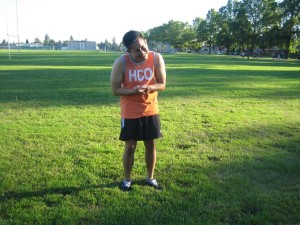A wasp sting is prevalent especially during the warm season. A sting can cause discomfort but most recover rapidly without any complications.
Just like with bees and hornets, wasps are equipped with a stinger which contains venom that is transmitted to humans during a sting. Even though a bee can only sting once, a wasp can sting several times during an attack. Nevertheless, even without an embedded stinger, the venom can trigger significant pain and irritation.
Indications of a wasp sting
Most individuals without sting allergies only experience minor symptoms during and after a wasp sting. The primary sensations that will arise include piercing pain or burning at the sting site. Swelling, redness and itchiness can also arise as well.
Normal localized reactions

An individual is likely to end up with an elevated welt around the sting site. A small-sized white mark might be evident in the center of the welt. In most cases, the swelling and pain settles within several hours after being stung.
Large localized reactions
Those who prone to this type of reaction might be highly sensitive to wasp stings but do not end up with dangerous symptoms such as anaphylaxis. The reactions include significant redness and swelling that intensifies for 2 or 3 days after a sting.
In most cases, the reactions might settle on their own over a week or so. The doctor should be informed if an individual develops a reaction after a wasp sting. In such instances, an over-the-counter antihistamine might be given to reduce the discomfort.
Management
Minor to moderate reactions
Mild and moderate reactions to a wasp sting can be cared for at home. Cleanse the sting site using water and soap to get rid as much venom as possible.
Apply an ice pack on the wound to reduce the pain and swelling. Make sure that the wound is clean and dry to reduce the risk for infection. Cover the area with bandage if needed.
Apply hydrocortisone cream or calamine lotion if the itchiness or skin irritation becomes bothersome. Colloidal oatmeal and baking soda can provide a soothing effect on the skin and can be used in the bath or as medicated skin creams.
Over-the-counter pain medications can be used to reduce the pain linked with a wasp sting. Antihistamines can also be given to alleviate the itchiness.
What to do for severe reactions?
A severe reaction to a wasp sting necessitates medical attention. If an injectable epinephrine is available, a shot must be given as soon as the symptoms arise. If the individual has a history of allergy to wasp stings, administer a shot after being stung and call for emergency assistance.
Quick Note / Disclaimer
The material posted on this page on a wasp sting is for learning and educational purposes only. To learn to recognize and manage insect bites and stings, register for a first aid and CPR course with Red Deer First Aid.

